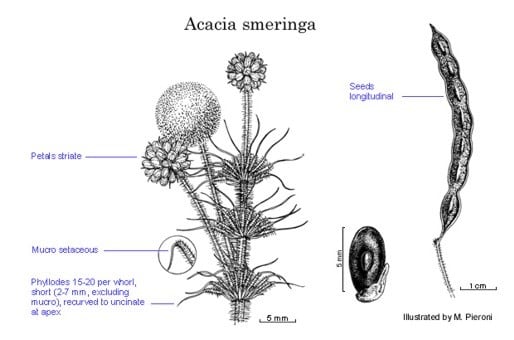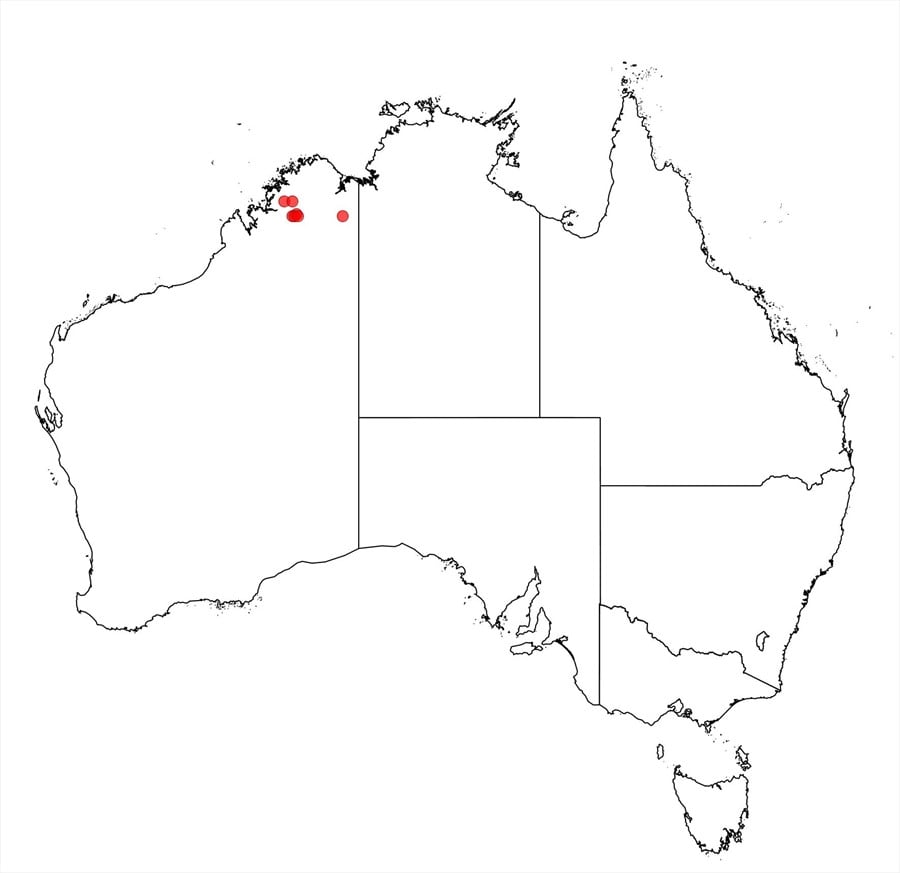Acacia smeringa A.S.George
WATTLE
Acacias of Australia
Family
Fabaceae
Distribution
Known from the type, a collection from near the Manning R., and one from the Mt Jameson area, W.A.
Description
Shrub to c. 1 m high, erect, viscid. Branchlets loosely tomentose with patent, white hairs to c. 0.5 mm long. Stipules linear-subulate, 1.5–2 mm long, incurved, yellowish. Phyllodes 15–20 per whorl, dimorphic with those towards ends of branchlets and often subtending inflorescences clearly shorter than those in vegetative region towards base of branchlets, erect to spreading with recurved to uncinate tip, linear, 2–7 mm long, thick, setose, glabrous; mucro excentric, spreading to recurved, 2–3 mm long. Peduncles 14–22 mm long, pilose with spreading white hairs. Heads c. 30-flowered. Flowers 5-merous; calyx 1.5 mm long, glabrous; calyx gamosepalous, the lobes short, broad, obtuse, striate; corolla 2.5 mm long, scarcely striate, glabrous. Pods sessile or almost so, linear, flat but raised over seeds, gently curved, 3–7.5 cm long, 5–6.5 mm wide, brown, glabrous; margin thickened. Seeds 5–9 per pod, longitudinal, ovoid-obovoid with oblique apex, 5–6 mm long, 4–6 mm wide, shining, black; pleurogram closed.
Phenology
Flowers May–June.
Habitat
Grows in shallow rocky soil, in woodland dominated by Eucalyptus argillacea with Triodia common in the understorey.
Specimens
W.A.: near Manning R., I.Cowie 329 (PERTH); Mt Jameson area, E.R.Tudor B14 (MEL).
Notes
Most closely related to A. dimorpha and A. prolata. The Caroline Ra. collection noted by A.S.George, Fl. Australia 11B: 394 (2001), is noted as a variant under A. dimorpha. The phyllode shape, shortly lobed calyx, larger scarcely striate glabrous corolla and closed pleurogram distinguish it from A. capillaris. The Tudor collection has a mucro 1.5–1.7 mm long.
FOA Reference
Data derived from Flora of Australia Volumes 11A (2001), 11B (2001) and 12 (1998), products of ABRS, ©Commonwealth of Australia
Author
A.S.George
This identification key and fact sheets are available as a mobile application:
URL: https://apps.lucidcentral.org/wattle/
© Copyright 2018. All rights reserved.







